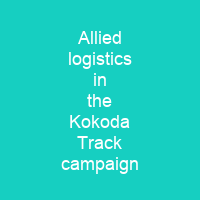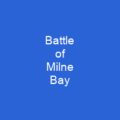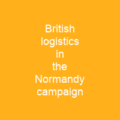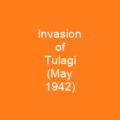Logistical Challenges in World War II: Allied Efforts in Papua
The success of the Kokoda Track campaign during World War II relied heavily on effective logistics and resource management. General Douglas MacArthur emphasized the importance of solving these logistical problems to ensure victory, highlighting the critical role that supply lines played in this theater.
Transforming Port Moresby
Port Moresby, the largest town in Papua at the time, was transformed into a major base. Despite frequent Japanese air raids, multiple airfields, roads, and facilities were constructed to support Allied operations. The operation heavily relied on shipping and air transport due to limited port facilities and the challenging rainforest terrain that hindered wheeled vehicle use.
Native Labor and Pack Animals
Thousands of Papuans were conscripted to carry supplies, with pack animals and even flying foxes used. This makeshift solution was necessary due to the lack of modern transportation infrastructure in the region.
The Climate and Health Challenges
The climate in Papua is mostly hot and humid with high rainfall, particularly in higher parts. Tropical diseases were prevalent among the native population, posing significant health challenges for both Allied troops and medical units. The population was about 300,000, with only 1,800 Europeans and few Asians due to immigration policies.
Main Exports and Limited Development
The main exports included copra and natural rubber. However, development in the region was limited, with little infrastructure except around Port Moresby on the southern coast. The climate at Port Moresby was relatively dry compared to Japanese airfields at Lae and Salamaua.
Strategic Importance of the Kokoda Track
The Kokoda Track is a foot track that runs from Kokoda to Port Moresby through the Owen Stanley Range. The terrain is challenging, with regular rises and falls. Japanese forces overran nearby territories in the early months of the Pacific War, leading Australia’s commanders to fear an invasion of northwestern Australia but also concerned about attacks on Port Moresby.
Operation and Reinforcements
A company of Australian soldiers was sent to Port Moresby in 1940, with later units reinforced for service in the tropics. On December 8, Lieutenant General Vernon Sturdee reinforced the garrison at Port Moresby. By April 30, Bell P-39 Airacobras had relieved the Kittyhawks, and by June, ground forces consisted of 1,098 AIF, 12,273 Militia, and 2,208 American troops.
Command Structure and Coordination
General Douglas MacArthur arrived in Australia in March 1942 and was appointed Supreme Commander of the South West Pacific Area. Allied intelligence warned of impending Japanese attacks, including a possible overland advance through Kokoda. The Joint Chiefs ordered the capture of Guadalcanal as part of the first phase of the advance.
Shipping and Convoy Operations
Australia had no shipping under national control at the start of the war due to the sale of the Government Line in 1928. Most Australian ships were requisitioned or chartered by the Shipping Control Board or the armed services. In 1942, only 24 ships were on charter; by January 1943, this number had decreased to 22.
The Dutch KPM refugee ships played an important role in the campaign, with 11,000,000 cubic metres of cargo carried by chartered ships during 1942. The Australian Army operated five troopships, but their separate shipping organizations caused inefficiencies due to coordination needs.
Airfield Development and Operations
Port Moresby’s wharf had only one deepwater wharf and two small jetties in early 1942. The timber wharf could accommodate only one Liberty ship at a time, leading to inefficiencies in unloading operations.
The construction of the causeway from the mainland to Tatana Island was a bold plan aimed at increasing port capacity. By November 3, 1942, the first ship berthed there, significantly boosting discharge rates and overall logistics efficiency.
Medical Units and Casualty Evacuation
The climate and terrain posed significant challenges for medical units. Malaria was a major concern due to inadequate treatment and preventive measures. Scrub typhus, dysentery, and vitamin-deficiency-related problems were also prevalent.
A unique casualty evacuation plan relied on stretcher bearers and Papuan Infantry Battalion men to transport the sick and wounded forward. Over time, more than 200 patients recovered sufficiently to return to their units, highlighting the resilience of both medical staff and troops in these harsh conditions.
Conclusion
The success of Allied logistics during World War II in Papua was a testament to adaptability and ingenuity. Despite numerous challenges, from native labor to tropical diseases, the Australian Army managed to overcome obstacles and ensure the supply lines necessary for victory on the Kokoda Track.

You want to know more about Allied logistics in the Kokoda Track campaign?
This page is based on the article Allied logistics in the Kokoda Track campaign published in Wikipedia (retrieved on November 28, 2024) and was automatically summarized using artificial intelligence.







